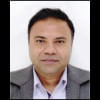How is Bangladesh faring?

The idea of inclusive growth emerged after high rates of growth in national income had failed to generate sustained improvements in human welfare. An economy cannot grow in a sustainable manner unless the benefits of growth are shared fairly among the individuals or groups in society. Improvements in human welfare are largely shaped by non-income dimensions, e.g. health, education, and gender relations, in addition to income and wealth status.
Given the importance of both income and non-income dimensions to human welfare, equitable distribution of resources along these dimensions among individuals is, therefore, critical to the multidimensional concept of inclusive growth.
Inclusive growth is viewed by the World Bank through the lens of pace and pattern of economic growth. While it is well recognised in the institution's approach to development that rapid pace of economic growth is necessary for dealing with absolute poverty, growth should be broad-based across sectors and inclusive of the country's labour force in order to be sustainable in the long run. Implying a direct link between the micro and macro determinants of growth, the World Bank's idea of inclusive growth focuses on productive employment.
While the World Bank's approach to understanding inclusive growth is generally concerned with sustained economic growth, inclusiveness requires equality of opportunity in terms of access to resources, markets, and an efficient regulatory environment for businesses and individuals.
With a view to promoting inclusive economic growth, the Asian Development Bank (ADB) has developed its corporate strategy considering inclusive growth as a concept that goes beyond broad-based growth. In this framework, inclusive growth is supposed to create new economic opportunities as well as ensure equal access to the opportunities, particularly for the poor.
Considering the fact that more equal societies perform better in development, the UNDP defines inclusive growth in terms of participation and benefit-sharing, the former referring to everyone's ability to participate in decision-making over the growth process and the latter referring to equitable distribution of growth benefits.
With a view to accelerating economic growth and empowering every citizen, Bangladesh adopted its Seventh Five-Year Plan (7FYP) for the period of 2016-2020. With considerable success of the Sixth Five-Year Plan (2011-2015), the government of Bangladesh has set a number of socioeconomic and development targets to be attained over the period of the 7FYP. The 7FYP defines inclusive growth as "growth that is both sustainable, broad-based in terms of employment opportunities and reaches out to people on the margin."
Bangladesh experienced sustained growth averaging 6.3 percent per year during the period of the Sixth Five-Year Plan and successfully maintained more than seven percent growth over the last three consecutive years (2016-2018). Categorised as a low middle-income country in July 2015 and with a current per-capita national income of USD 1,752 (2017-18), Bangladesh has maintained a stable macroeconomic performance in terms of contained inflationary pressure, budget deficit, exchange rate volatility, ratio of public debt to gross domestic product and significant poverty reduction at the national level.
However, the country is facing macroeconomic challenges mainly in regard to growing pressure on the balance of payment and turbulence in the financial sector. In terms of reduction in income poverty, Bangladesh has witnessed a drop of incidence to 24.3 percent in 2016 from 31.5 in 2010, and extreme poverty to 12.9 percent from 16.5 percent.
Remote and ecologically vulnerable areas are usually characterised by a higher incidence of poverty. Regional disparity emanating from the lack of income-generating activities also poses serious challenges to the effectiveness of sustained growth. Though Bangladesh has been successful in poverty reduction at the national level, there remain major challenges in terms of addressing poverty at the regional level. According to Household Income and Expenditure Survey (HIES) 2016, there are seven districts with poverty incidence of more than 50 percent. Kurigram has the highest poverty incidence (70.8 percent) in the country. If we want to achieve Goal 1 of SDGs (end poverty in all its forms everywhere), we have to address regional poverty by taking up special programmes for such regions lagging behind.
Challenges also remain in terms of addressing inequality (SDG 10: Reduce inequality within and among countries). Increase in the Gini coefficient of income distribution to its highest-ever level of 0.483 in 2016 signals the ominous state of rising income inequality in the country. Income inequality increased at the national, urban and rural level between HIES 2010 and HIES 2016 surveys. The poorest 10 percent of the household population received 1.01 percent of the total national income in 2016 compared to two percent in 2010, whereas the richest 10 percent of the population owned 38.16 percent of the national income in 2016 compared to 35.84 percent in 2010. Inequality increased also due to the reduced pace of job creation in recent years. It was found that the annual rate of growth in employment was 3.1 percent during 2003-2010, whereas employment growth declined to 1.8 percent per annum during 2011-2016.
First, in order to enhance growth and employment opportunities, mobilisation of resources for promoting private investment is critical. Innovative strategies are needed for increasing investment by reducing cost of doing business. In addition, large-scale investment is required in physical as well as social infrastructure for fostering inclusive growth with addressing regional poverty and inequality in the country.
Second, Bangladesh suffers from infrastructural deficiencies, which hinder it from reaping the benefits of demographic transition that the country is currently experiencing. In order to create more economic opportunities for its large working-age population and address regional poverty, the country must prioritise specific initiatives to enhance the quality of, among others, energy, transport and urban infrastructure.
Third, to overcome the current hurdles to private investment and employment opportunities, streamlining the establishment and operation of special economic zones is likely to serve useful purpose. SEZs are expected to be integrated with the domestic economy stimulating private investment, widening the manufacturing base, creating new jobs at the national level as a whole and regional level in particular.
Fourth, in addition to the SEZs, development of growth centres, information technology parks, and economic corridors along major transportation networks will help accelerate the pace of industrialisation and create employment opportunities in smaller population centres adjoining the rural areas.
Fifth, more investment is necessary for increasing access to education and skills development opportunities for the growing number of unemployed youth. In addition to enhancing the quality of education, prudent strategies for strengthening vocational and employment-oriented education programmes are critical to increase the employability of graduates.
Finally, effective delivery of public services must be ensured through improving governance and strengthening institutional capacity in order to make the growth process inclusive, sustainable and pro-poor. In addition, transparency, accountability and rule of law must be in place for the use of scarce public resources to be channelled into productive sectors of the economy.
The original paper on which this article is based was prepared with the support of the Asia Foundation.
Dr M Abu Eusuf is an economist, professor and former chair, Department of Development Studies, and Director, Centre on Budget and Policy, University of Dhaka.
Email: [email protected]





Comments